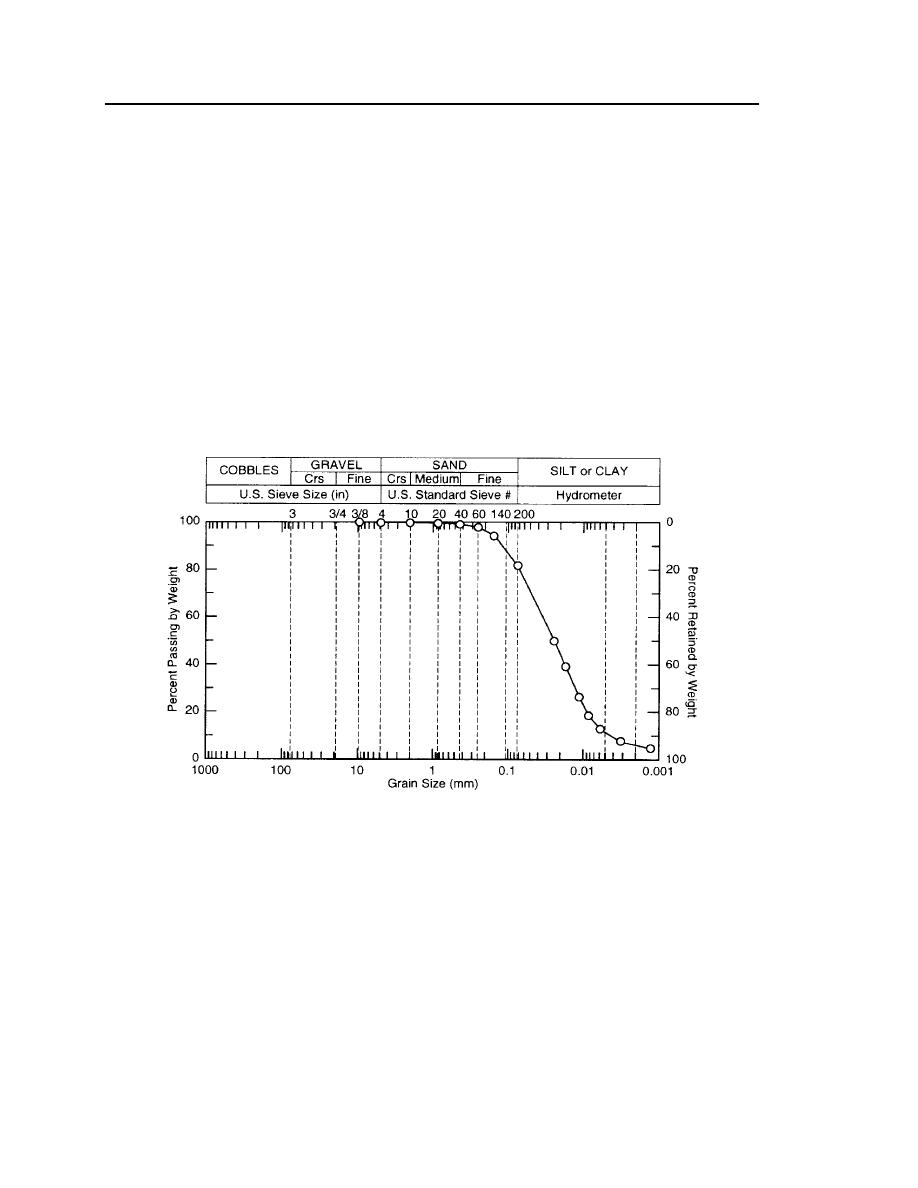
4
ERDC/CRREL TN-03-3
2
EXPERIMENTS
Our goal was to isolate and quantify the effect of FT on soil erosion so that
the only difference between erosion in our control soil and the frozen and thawed
soil was the FT cycle. This allowed us to attribute the measured differences in
soil loss and rill development to the FT process.
We used the frost-susceptible Hanover silt, a low-plasticity, inorganic clayey
silt, with 82% silt- and clay-sized particles and 18% fine sand (Fig. 1) to obtain
an upper bound on the effect of soil FT. This soil is classified as ML in the Uni-
fied Soil Classification System. It has a specific gravity of 2.72, a liquid limit of
28%, and a plastic index of 1 (Shoop and Gatto 1992).
Figure 1. Grain-size distribution of the Hanover silt.
During soil preparation the water content was adjusted into the appropriate
range and periodically checked using a Vitel Hydra Probe that measures the
dielectric constant. A pair of identical soil bins (31 inches long, 15 inches wide,
7 inches deep) was prepared for each experiment. One bin was subjected to one
FT cycle prior to the test and the other bin was kept as a control (C) to remain
unfrozen. The FT bin was encased with 5-cm-thick insulation board and a freeze
plate was placed on the soil surface to freeze the soil from the top, as in nature.
For all experiments the FT bin was frozen once it reached full depth, then



 Previous Page
Previous Page
